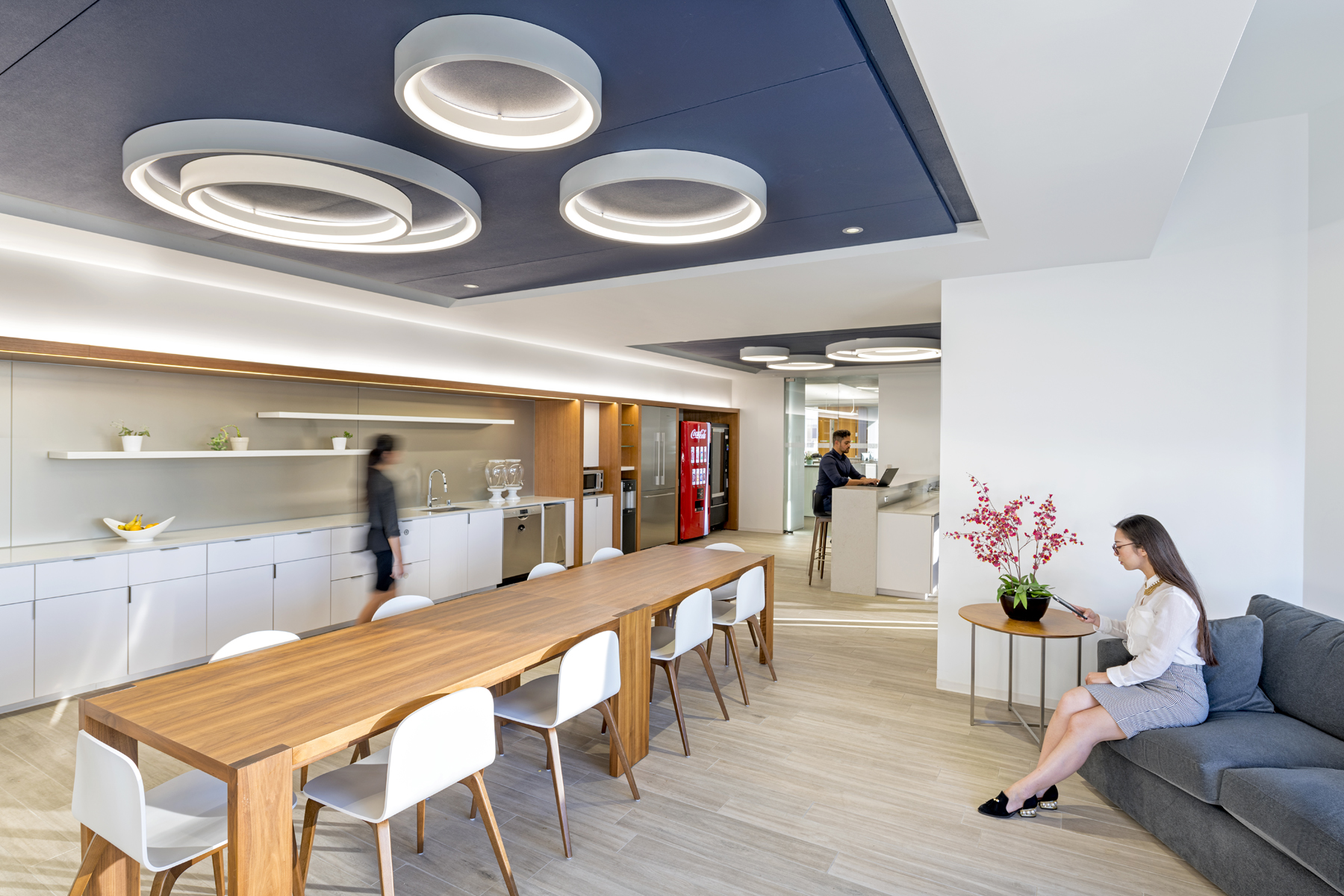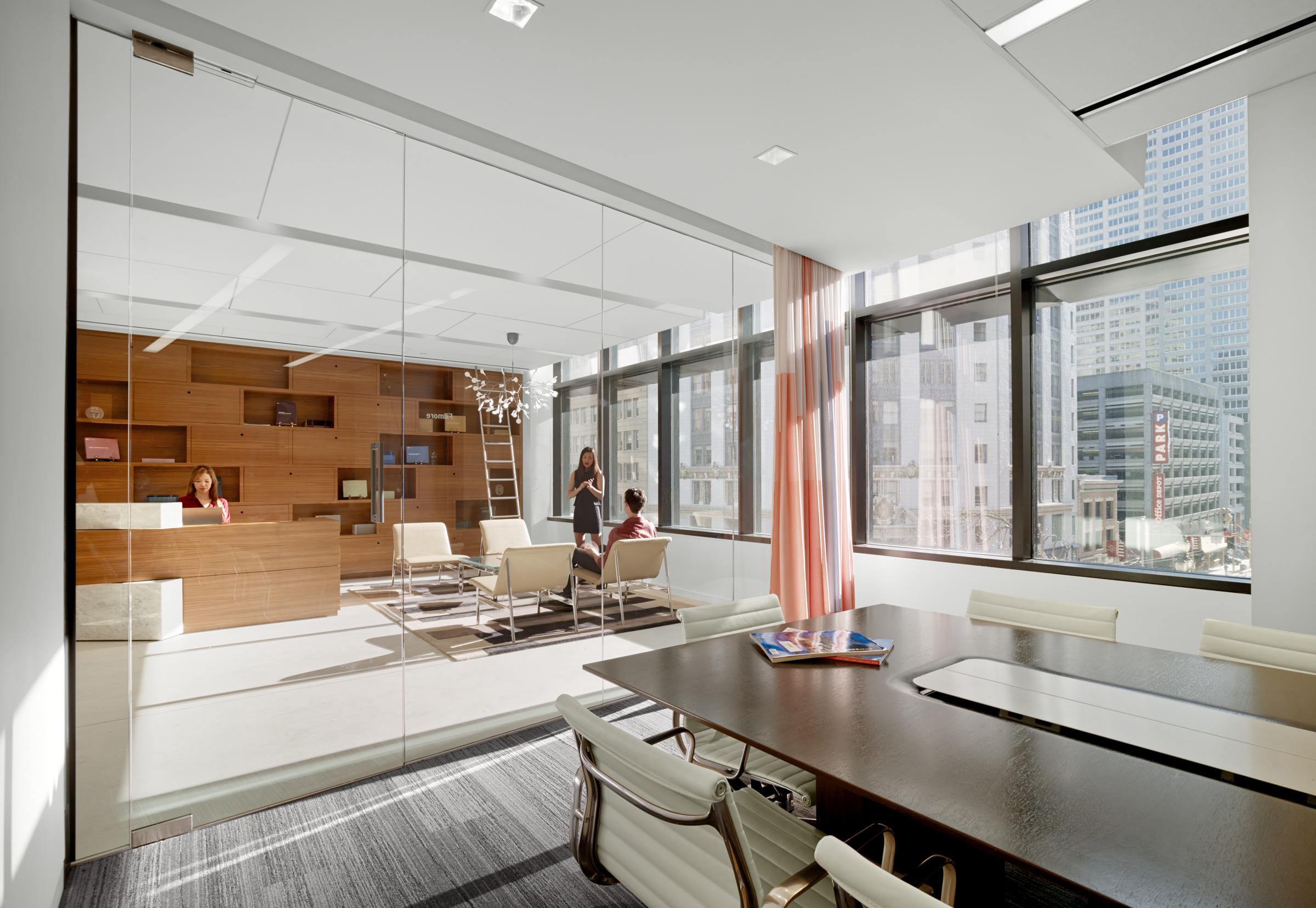Chasing Productivity and Innovation: Can the Workplace Get Us There?
This article, authored by Kendra Kettelhut of SmithGroup, was previously published in Work Design Magazine.
Change is a constant. In order to be relevant, successful and ahead of the competition, businesses need to be more productive and innovative than ever before. The workplace has changed dramatically over the past decades. The tasks at hand and the way people work has shifted. A company is made up of the sum of its personnel’s talents, skills and abilities to innovate and produce. This is fostered at the workplace level. The experience one has at their place of work – the place they create, produce and deliver – is highly impacted by the physical attributes of the space.
The key elements that cultivate the highest levels of productivity are choice, transparency and disruption. By empowering workers with choice, providing a level of architectural transparency and encouraging inspiration through disruption, the workplace lays the foundation to propel the individual, team and organization to a higher level of production and innovation.
If the goal of a new space if to increase productivity and innovation, one must consider both the individual and the team. Both are equally important to the level of productivity and innovation taking place. Given the organization and the type of work required, the two can be independent or absolutely dependent on the other. At the individual level, engagement, motivation, and quality of space directly impacts productivity and innovation. At the team level, trust and the availability of collaboration spaces to share, learn and inspire are critical in fostering the highest levels of productivity and innovation.
The individual may have a variety of different tasks to accomplish in any given day. He/she may be answering emails, analyzing data, compiling research, or developing a new concept. Historically, the desk was the space where all work needed to take place and the only space individuals had to complete work. Generations past had the mentality that if an employee was not at his/her desk, they were not working. This exacerbates the idea that there is only one type of space needed to work. Thankfully, this notion has shifted dramatically in recent years. Different tasks call for different environments. Some tasks require quiet, focused, heads-down space where disruption is limited or not present at all. Other tasks are better suited for an ergonomic sit-stand desk with a laptop, an open lounge space, or in a project room where a few individuals can work on their own respective tasks for a larger project. By providing a range of space typologies, the individual can choose the environment that fits their needs and comfort level therefore significantly improving productivity. Furthermore, the company conveys a message of trust, confidence and autonomy in their employees. Choice in the workplace has direct correlation to productivity levels and innovation, as well as employee satisfaction, engagement and empowerment.
Architectural transparency translates and permeates a culture of trust and corporate equilibrium. The most innovative companies understand that some of the best ideas do not come from the top down. When an organization is more nimble and flat, that may translate to an open plan space with little to no offices and an abundance of glass for meeting and conference spaces. The glass transmits the message that the company has nothing to hide. This notion fosters trust and empowers employees. Visual transparency also signifies inclusivity, which is an important component of team building. The main driver of any collaboration space is to share ideas and solve problems together. Brilliant ideas rarely occur in a vacuum. By designing these spaces in a transparent way, collaboration is celebrated and encouraged.
Transparency also allows daylight to permeate deeper into a workplace. Natural light is a top request from clients as there has been a vast amount of research done studying how natural light impacts the overall wellbeing and performance of workers. Proud Green Building, an organization whose mission is to accelerate the adoption of high performance strategies, systems and products for all types of buildings recently completed a study which stated, "The study found that optimizing the amount of natural light in an office significantly improves health and wellness among workers, leading to gains in productivity," said Alan Hedge, a professor in the Department of Design and Environmental Analysis at Cornell who conducted the research. "As companies increasingly look to empower their employees to work better and be healthier, it is clear that placing them in office spaces with optimal natural light should be one of their first considerations."
Thirdly, disruption. At first thought disruption might seem contradictory as a critical element needed in the workplace to foster productivity and innovation. However, disruption can be a positive factor. Technology in the workplace can disrupt old ways of working and create new ideas and concepts. Disruption can also occur physically as you move about the office space. Interaction intersections, i.e. a social hub, café, or kitchenette, people are “interrupted” in their journey through the office. These types of disruptions create the serendipitous collisions in which ideas can be shared, problems solved, and relationships formed – which all help to create and inspire new ideas.
Disruption spaces also provide the ability to communicate company messages through video, art, or various technology mediums. In a brand and culture building way, employees can be informed on company news, events, and policies in these interstitial spaces which allow for breaks throughout the day. Various impromptu meetings can take place in an informal, disruption-type space which promote the sharing of knowledge and ideas.
A highly engaged employee equals a highly productive employee. A highly inspired and motivated team equals a highly innovative team. Productivity and innovation are derived through empowering the employee with choice to decide where and how to accomplish each task; by architectural transparency and openness which encourages collaboration and the sharing of ideas; and by providing spaces that disrupt and communicate inspiration and motivation the individual and the team.


